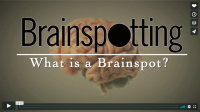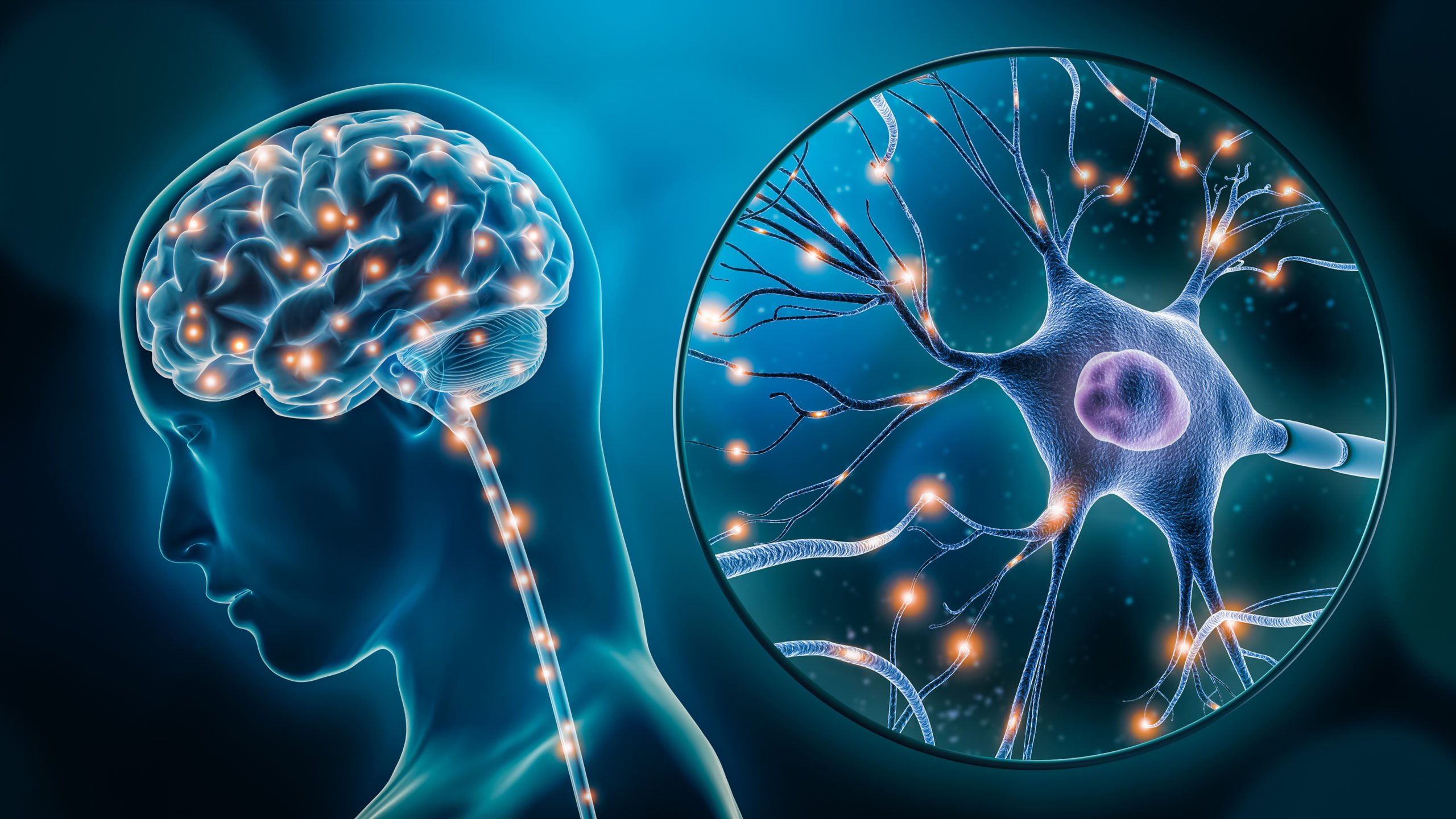Brainspotting
Introduction
Beyond Talk Therapy:
Deep Brain/Body Healing
Developed by David Grand, PhD
Brainspotting – The Most Effective Method Used After the Newtown-Sandy Hook Tragedy
After the Newton-Sandy Hook school shooting tragedy in December of 2012, many therapists worked with the survivors to help them recover from the trauma. In 2016, the Newtown-Sandy Hook Community Foundation, Inc., did a survey of the community to assess which therapy method was the most effective. The answer: Brainspotting. (You can read the report here: 2016 NSHCF Community Assessment Report)
"Brainspotting is based on the profound attunement of the therapist with the patient, finding a somatic cue and extinguishing it by down-regulating the amygdala. It isn't just PNS (Parasympathetic Nervous System) activation that is facilitated, it is homeostasis."
-- Robert Scaer, MD, "The Trauma Spectrum"
What is Brainspotting and how does it work?
We all experience emotionally upsetting events in our lives. Sometimes we are able to process these events and we never think of them again. Other times, parts of the emotional events stay in our brain/nervous system and continue to bother us, which we notice on a conscious level. And often, even if they do not bother us consciously, these events continue to influence us subconsciously. In some cases, this can lead to emotional or behavioral problems in our life, such as addiction, anxiety, anger, depression, phobias, panic attacks, PTSD, substance abuse, numbness, etc.
Clients who come to my office often feel stuck because they have tried to fix the problem already and haven’t been able to overcome it. Most of these clients don’t realize is that the problem is in their subconscious and thus out of their ordinary awareness. There may have been an event in their past, or a series of events, that is the root of the issue but that they have forgotten about or that they think they are “over.” Or a client may have some awareness of the root cause but be unaware of additional connections the brain has made to that issue that are beyond the person’s ability to access consciously. Brainspotting allows a client to access easily that deep source of the problem and all that the brain has connected to it, and lets the client’s brain naturally processes all of the material that is causing the emotional issues that are currently bothering the client.
Brainspotting uses eye position to activate specific deep parts of the brain where these emotional events appear to be stored. From studies we know that the Brainspotting process bypasses the conscious brain (cerebral cortex) and goes into the subcortical brain (the limbic brain and brain stem) where it appears the brain records these unprocessed emotional upsets deep in its neural circuitry. In this way, Brainspotting is unlike most other therapy methods that focus on talk as the main way to process events. Brainspotting bypasses the part of the brain that has language and delves into the unconscious part of the brain, stimulating the precise parts necessary to process the issue at hand.
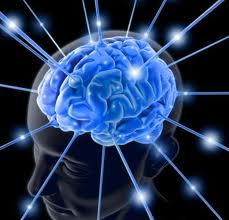
Each client may experience this healing process in a different, individualized way. The client may experience body sensations, emotions, words may come up or memories may be stimulated. It is the client’s job to simply stay with the process and follow where it goes. The therapist stays attuned to the client and may help stabilize the client if it becomes overwhelming, although this is rare with BSP. The therapist also provides an important role in healing in the cases of trauma or attachment issues (problems in relationships with important people in our lives) because the experience of those issues often involves a deep feeling of aloneness. Having an attuned therapist present with you as you process this aloneness helps to heal that emotional wound because you are not alone with it.
In my experience, usually clients report that it was an interesting or “weird” process and many have told me that they could tell their brain seemed to be processing and healing the issue.
Uses for Brainspotting
Brainspotting can be effectively used with these conditions:
- Trauma – both physical and emotional trauma (broadly defined)
- Anger and rage problems
- Anxiety & Stress
- Overcoming Blocks or Slumps
- Self-Sabotage in any form
- Addictions and Substance Abuse (especially cravings)
- ADD and ADHD
- Stuttering
- Phobias & Panic Attacks
-
E.g., trauma from abuse (emotional, physical or sexual), from a relationship breakup, recovery from injury or accident, trauma from medical interventions, surgery or treatment, trauma from war or natural disasters, trauma experienced as a first responder, etc.
-
E.g., Sports Peak Performance issues, blocks in artistic or creative endeavors, as well as blocks in work situations or feeling “stuck” in any way
More
Information
Sport Psychology
and Neuroscience
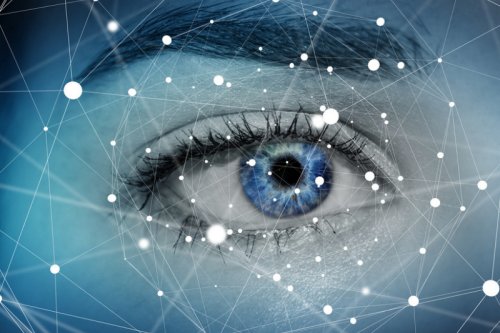
Neuroscience
Explanation of How These Negative Experiences Unconsciously Impede PerformanceThe brain is a vastly complex organ with roughly 100 billion neurons and 1 quadrillion possible neuron synaptic connections. (Danial Amen, MD.) (One quadrillion is 1 million multiplied by 1 billion.) According to the American Academy of Neurology, we only understand about 10% of how the brain works.
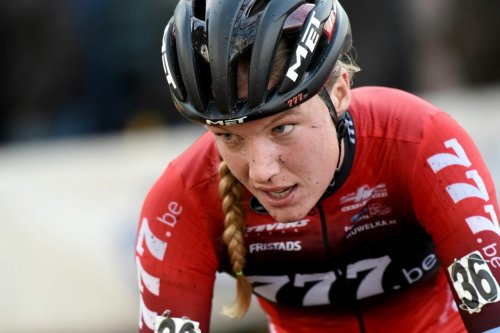
Sports Psychology
Neuro Performance Training for Sports with BrainspottingUsing Neuroscience to Overcome Mental Blocks, Injuries/Concussions & To Expand Peak Performance
Results usually seen in 10-12 Sessions
From Weekend Warriors to Student-Athletes to Elite/Professional Athletes -- Neuro Performance Training for Sports Utilizes Neuroscience-Based Methods to:
- Overcome mental blocks, slumps, the yips, freezing, balking, performance anxiety, etc.
- Improve recovery from physical injuries, particularly head injuries or concussions.
- Develop a neuro-physiological cue to get “into the zone” that can be accessed easily any time.
- Expand and enhance peak performance, even for the athlete who is performing well.
- Make an athlete mentally tougher and more resilient.
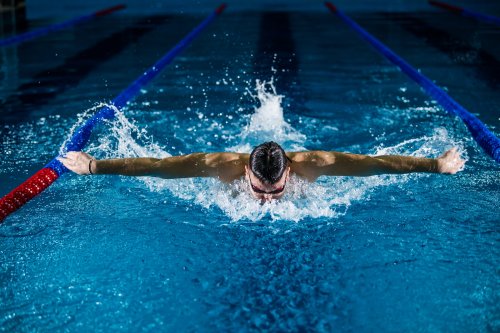
Peak Performance
Expanding and Enhancing Peak PerformanceNeuro Performance Training with Brainspotting can Expand and Enhance Performance by:
- Cue for being “In the Flow;”
- Clearing Unconscious Maladaptations in Neuro Pathways; and
- Clearing Worst Case Scenarios/“What Ifs” from Causing an Unconscious Self-Protective Reaction.
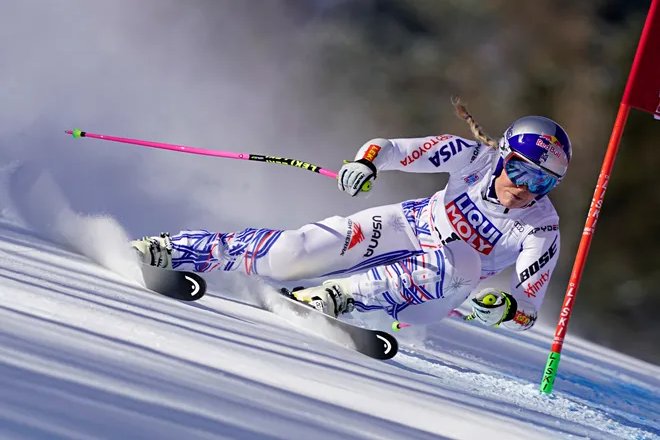
Lindsey Vonn’s
Experience with Brainspotting“At first I thought it [Brainspotting] sounded like hocus-pocus, but in practice, I’ve found that it’s not only fascinating, but has worked incredibly well.”
-Lindsey Vonn, from her book “Rise: My Story”
Brainspotting
Information
Neuroscience
Explanation of How These Negative Experiences Unconsciously Impede Performance
The brain is a vastly complex organ with roughly 100 billion neurons and 1 quadrillion possible neuron synaptic connections. (Danial Amen, MD.) (One quadrillion is 1 million multiplied by 1 billion.) According to the American Academy of Neurology, we only understand about 10% of how the brain works.
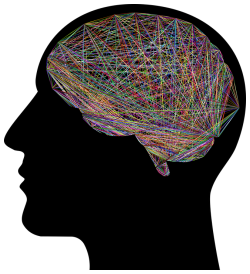
Our brain processes most normal daily events through and stores them in our deep subcortical brain, far from consciousness. In contrast, upsetting events overwhelm the brain and the information coming in isn’t “digested” and is stored neuro-physiologically in a “trauma capsule.” (See Levine, P., Phd, Waking the Tiger Healing Trauma; Scaer, R., MD, The Body Bears the Burden; Van de Kolk, B., MD, The Body Keeps the Score.)
Neuroscience experts agree that all of the information about the upsetting experience, including negative thoughts associated with it, is stored in the brain-body in exactly the form it was initially experienced. (See Levine, P., Phd, Waking the Tiger Healing Trauma; Scaer, R., MD, The Body Bears the Burden; Scaer, R., MD, The Eight Keys to Brain-Body Balance; Van de Kolk, B., MD, The Body Keeps the Score.) The body instantly memorizes the physical experience in exquisite detail, including the body sensations, along with the associated sights, sounds, smells and tastes. The emotions and where they are felt in the body are frozen too. (Grand, D., Phd., & Goldberg, A., Ed.D, This is Your Brain on Sports)

Days or years later, if the athlete is in a similar situation, the upsetting experience may be unconsciously activated, hijacking the brain and interfering with performance in the moment. (Grand, D., Phd., & Goldberg, A., Ed.D, This is Your Brain on Sports).
How does this happen? When an athlete faces a situation that unconsciously reminds him or her of a previous negative experience that got stored in unprocessed form in his or her brain and nervous system, the Fight/Flight/Freeze instinctive response is triggered, even though most times the current situation is not literally life threatening. To our primitive brain, however, it feels life threatening. (Grand, D., Phd., & Goldberg, A., Ed.D, This is Your Brain on Sports)
Once Fight/Flight/Freeze instinct is triggered, the athlete’s developed skill reflexes go offline. (Grand, D., Phd., & Goldberg, A., Ed.D, This is Your Brain on Sports).
For example, a skier who previously crashed on icy snow and is now competing on icy snow again, may have conditioned muscle memory & reflexes to stay low, lean into his edges, etc., but because his unconscious brain senses the icy snow, his survival reflexes pull him in the opposite direction, keeping him high and back on his skis so he will go slower and be safer, despite his conscious desire to go faster. (Grand, D., Phd., & Goldberg, A., Ed.D, This is Your Brain on Sports)
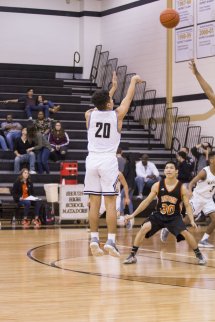
The Importance of Neuro Pathways for Athletes
When someone trains as an athlete, all those hours of practice and drills condition neuro pathways for muscles and movement -- i.e., doing “positive reps.” The more an action is repeated, the stronger the association of the neurons and the easier it is for the athlete to call upon them without thinking in competition. In contrast, an athlete wants to avoid “negative reps” because it would condition the neural circuits to repeat the wrong movements.
With upsetting, negative events, the neuro pathways get knotted up with maladaptations (stored unprocessed information) as described above.
- You cannot train or condition over the maladaptations. They must be accessed in the deep brain, processed. (Grand, D., Phd., & Goldberg, A., Ed.D, This is Your Brain on Sports)
- More practicing won’t help. Positive thinking and better focus won’t help either. (Grand, D., Phd., & Goldberg, A., Ed.D, This is Your Brain on Sports)
- NPT/BSP will help by accessing the deep brain and de-conditioning the maladaptive neuro pathways, freeing them to be utilized by the athlete. (Grand, D., Phd., 2013)
- The brain no longer gets hijacked by the self-protective mechanism, diverting energy and physical resources (Grand, D., Phd., & Goldberg, A., Ed.D, This is Your Brain on Sports).
- The symptoms of performance anxiety, tension, negative self-talk, etc, go away (Grand, D., Phd., & Goldberg, A., Ed.D, This is Your Brain on Sports); and

Brainspotting
Information
Sports Psychology
Neuro Performance Training for Sports with Brainspotting
Results usually seen in 10-12 Sessions
From Weekend Warriors to Student-Athletes to Elite/Professional Athletes -- Neuro Performance Training for Sports Utilizes Neuroscience-Based Methods to:
- Overcome mental blocks, slumps, the yips, freezing, balking, performance anxiety, etc.
- Improve recovery from physical injuries, particularly head injuries or concussions.
- Develop a neuro-physiological cue to get “into the zone” that can be accessed easily any time.
- Expand and enhance peak performance, even for the athlete who is performing well.
- Make an athlete mentally tougher and more resilient.

Traditional sports psychology struggles to help athletes suffering from slumps, mental blocks, the yips or freezing, etc. It also often fails to help athletes who have completely recovered from a physical injury but can’t regain their prior performance level, or who have seemed unable to perform as they used to for no apparent reason. Traditional sports psychology fails because it only addresses the surface (conscious) symptoms and fails to clear out the unconscious material holding an athlete back. (Grand, D., Phd, & Goldberg, A., Ed.D., This is Your Brain on Sports)
Neuro Performance Training (“NPT”) for Sports with Brainspotting (“BSP”) is different, and it works.
How is NPT/BSP different?
1. NPT/BSP Uniquely Utilizes the Brain/Body Connection to Optimize Performance.Brainspotting principle: “What’s in the brain is in the body and what’s in the body is in the brain.”- David Grand, Phd.
The brain sends messages via the spinal cord to peripheral nerves throughout the body that serve to control the muscles and internal organs. In this way, the brain and the body are one integrated unit in the comprehensive nervous system. (David Grand, Phd). That is why it’s important to optimize the efficiency of the brain’s communication with the body, in addition to training the body for sports performance. Brainspotting does exactly this by clearing out maladaptations in the neuro pathways. (Grand, D., Phd., 2013).
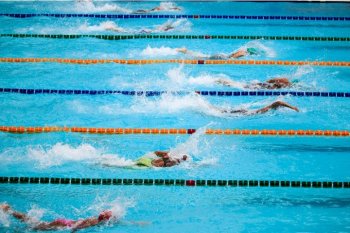
For example, just as a child who puts their hand on the hot stove will immediately pull it backward and then be cautious of touching hot stoves, a pitcher who got hit in the face with a line drive may find herself reflexively ducking any time the ball comes her way, no matter the speed of the ball. (Grand, D., Phd, & Goldberg, A., Ed.D., This is Your Brain on Sports.) She cannot help her body’s reaction. Her deep subcortical brain needs to “un-learn” that maladaptive reaction because she cannot avoid softballs being thrown her way. Neuro performance training with Brainspotting de-conditions those maladaptive neuro pathways causing that reaction, releasing her from that reflexive action and allowing her to control her movements and perform more freely. (Grand, D., Phd, & Goldberg, A., Ed.D., This is Your Brain on Sports)
2. Neuro Performance Training with Brainspotting Correctly Identifies What is a Symptom and What is the Cause and Uses Neuroscientific Methods to Clear Out the Causes.NPT/BSP uses neurobiological tools that allow us to process experiences and symptoms not typically within the conscious mind. As many athletes will tell you, these problems do not resolve from thinking about it or trying to figure it out. Physically practicing more will also not overcome them. NPT with Brainspotting accesses and directly targets the problems in the neuro pathways of the unconscious brain that are causing the performance problems. (Grand, D., Phd, 2013; Grand, D., Phd, & Goldberg, A., Ed.D., This is Your Brain on Sports)
Dr. David Grand’s revolutionary research found that:
- The Cause. Mental blocks in performance result from bad experiences or upsetting incidents which alter the athlete’s unconscious brain and nervous system, creating maladaptations in the neuro pathways which impede performance without the athlete being aware of it. (Grand, D., Phd, & Goldberg, A., Ed.D., This is Your Brain on Sports; Grand, D., Phd, 2013)
- On an unconscious level, the brain-body is diverting energy to a self-protective stance, inhibiting free movement. (Grand, D., Phd, & Goldberg, A., Ed.D., This is Your Brain on Sports.)
- For more neuroscience on how the brain is unable to fully process these negative, upsetting events and how that causes maladaptations in neuro pathways: Explanation of How These Negative Experiences Unconsciously Impede Performance.

- Any Upsetting Experience. The roots of the performance problem are upsetting incidents or negative experiences that cause pain -mentally or physically. (Grand, D., Phd, & Goldberg, A., Ed.D., This is Your Brain on Sports) Often referred to as “trauma,” in this context it is broadly defined as anything that has been significantly physically or emotionally upsetting to the individual. (Grand, D., Phd, & Goldberg, A., Ed.D., This is Your Brain on Sports)
- For example, events where the athlete experienced:
- Perceived Failures/Disappointments
- Embarrassment/Humiliation/Shame
- Criticism from self, coaches, parents, teammates, internet trolls, fans, etc., or
- Physical Injuries (even small ones)
- It can be Physical and/or Mental. The upsetting experience may be (a) mental, (b) physical or (c) both. The brain treats both the same way and does not distinguish between them. (Scaer, R., MD)
- Secondary or Vicarious Trauma. Even witnessing another athlete’s failure or injury or being “chewed out” can contribute to this. Your brain reacts with mirror neurons to what you perceive. Your brain is now aware of the possibility of that happening and will unconsciously protect against it. (Grand, D., Phd., & Goldberg, A., Ed.D, This is Your Brain on Sports; Roberts, P. LCSW).
- Everyone Experiences This Type of “Trauma.” Everyone experiences ups and downs in daily life, including frequent negative experiences. But for an athlete competing in sports, the exposure to physical and emotional trauma is even greater. (Grand, D., Phd., & Goldberg, A., Ed.D, This is Your Brain on Sports).
- A relationship breakup/big fight
- A sprain or broken bone
- Parents divorcing
- Death of family, friend or pet
- Being bullied, abused or harassed
- Being embarrassed in front of the class
- Family problems or conflicts
- Work or school problems or conflicts
- Life transitions
- Losing friendships
- Loss of a job
- Failing/Doing Poorly on an exam
- Minor car or bike accident
- Medical Procedures
- Surgery. We take it for granted, but it is a major trauma to the body to be cut open. Further, because of the anesthesia, we don’t consciously recall the physical trauma of it, but the unconscious brain does remember. (Grand, D., Phd., & Goldberg, A., Ed.D, This is Your Brain on Sports).
- Sports Related Examples. Athletes are tough – mentally and physically. They’re good at using positive thinking to overcome disappointments, “failures,” etc.. However, unconsciouslytheir body remembers the upsetting experience, and the resulting maladaptations accumulate in the athlete’s neuro pathways despite the ways the athlete may use conscious thinking to deal with it. This is the unconscious self-protection mechanism gone awry. (Grand, D., Phd., & Goldberg, A., Ed.D, This is Your Brain on Sports; Grand, D., Phd, 2013).
- Physical injury or getting “shaken up”
- Seeing someone else injured
- Having a bad practice or competition
- Being benched or cut from the team
- Losing a race or doing worse than expected
- Making a mistake in competition
- Self-criticism, or criticism from others (coaches, parents, teammates, internet trolls, fans, etc.)
- Being yelled at, or being yelled at in front of teammates
- Seeing a teammate being yelled at or criticized
- Being disqualified
- Shrugged Off But Not Forgotten. The bad experience may have happened in an instant and be dismissed by the athlete shortly after, seemingly easily forgotten, but the body keeps the score in your unconscious. (Grand, D., Phd., & Goldberg, A., Ed.D, This is Your Brain on Sports).
- A hard tackle in football
- Falls on the ice or court, etc.
- A “near-miss” collision/hit/fall/mistake
- Feeling “off” as executing a skill
- An equipment failure
- Collision at home plate
- Survival Mechanism. When one of these negative experiences happens, the survival mechanism of the subcortical brain kicks in automatically, creating self-protective neurophysiology to prevent a reoccurrence. This is an automatic reaction, outside of our control. (Grand, D., Phd., & Goldberg, A., Ed.D, This is Your Brain on Sports).
- More specifically, it creates maladaptive neuro pathways in the brain and nervous system as the unconscious brain seeks to prevent that bad experience from happening again.
- Accumulation Causes Problems with Performance. Over time, these maladaptations accumulate until they become noticeable through poor performance or performance blocks. (Grand, D., Phd, & Goldberg, A., Ed.D., This is Your Brain on Sports.)
- Conscious Efforts Don’t Work to Remedy It. The performance blocks cannot be resolved by improved self-talk, concentration, mental imagery, or relaxation (traditional sports psychology methods) or by physically practicing more. You cannot condition over the maladaptations. They need to be accessed, processed, released and rewritten to be cleared out. (Grand, D., Phd, & Goldberg, A., Ed.D., This is Your Brain on Sports.)
- The Symptoms -- What We Notice. The performance anxiety, loss of confidence, tentativeness, negative self-talk, and body tension consciously experienced by the athlete are actually symptoms of these unconsciously accumulated, upsetting, negative experiences, that go away once the roots of the problem are eliminated. (Grand, D., Phd, & Goldberg, A., Ed.D., This is Your Brain on Sports.)
3. NPT/BSP Offers a Unique Process that Directly Targets the Roots of the Problem by Accessing the Subcortical Brain.

NPT/BSP is unique in sports psychology because it makes it easy for the athlete to access their subcortical brain, bringing the unconscious material to consciousness where it can be processed and released. (Grand, D. Phd, Brainspotting The Revolutionary New Therapy for Rapid and Effective Change.)
4. NPT/BSP Stops the Athlete’s Brain from Getting Hijacked and Allows the Coaches to Effectively Train & Condition the Athlete.Whenever the primitive brain senses a threat, it hijacks the athlete’s neuro pathways for self-protection (Grand, D., Phd., & Goldberg, A., Ed.D, This is Your Brain on Sports). The more the negative experiences accumulate, the more heightened the primitive brain’s sensitivity and the more strongly it reacts, until the problems become noticeable in performance and execution. (Grand, D., Phd., & Goldberg, A., Ed.D, This is Your Brain on Sports).

Once the maladaptive neuro pathways have been de-conditioned, the brain no longer gets hijacked by them and the athlete is able to utilize the neuro pathways conditioned through training and practice (Grand, D., Phd, 2013). The de-conditioning releases the instinctive guarding mechanism, enabling the athlete to have free movement, which is crucial to good performance (Grand, D., Phd, 2013). This change could be the difference between 4th place off the podium and first place.
Brainspotting “de-conditions” the maladaptive neuro pathways, clearing out neuro pathways so they can be useful to the athlete in their performance. De-conditioning allows the brain and nervous system to function at a higher level. This improves the athlete’s performance because the energy is no longer being diverted for self-protection (Grand, D., Phd, 2013), As a result, the athlete has more neuro-physiological and mental resources available.
➔ Thus, after NPT/BSP the athlete can perform better in the moment, using the neuro pathways conditioned through training and “positive reps,” without the baggage of the past weighing him or her down. How does Neuro Performance Training with Brainspotting work?
Neuro Performance Training with Brainspotting is different from Brainspotting in regular clinical work, though the basics are the same. The neuro performance training for sports with Brainspotting is a more vigorous, assertive and proactive methodology with a more set structure.
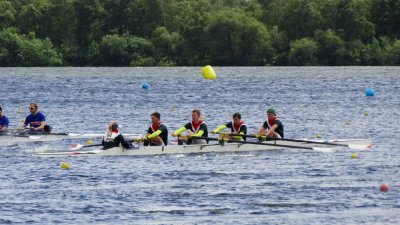
The brain is the most complex organ in the body and the eyes are the second most complex organ in the body. Visual processing in the brain is linked to at least 60% of the brain. Ninety percent (90%) of the information transmitted to the brain is from sight, which takes in information both consciously and unconsciously. (BrainFacts.org). Brainspotting utilizes the connection between the brain’s processing mechanism and sight to identify a “Brainspot.”
A Brainspot is not a single spot in the brain. It is the eye position that connects to the neural network of activity in the brain that holds the “trauma capsule” with all the unprocessed trauma. (Grand, D., Phd, Brainspotting; Levine, P. Phd). A Brainspot is actually a physiological subsystem in the brain and nervous system holding emotional experience in memory form. (Grand, D. Phd.)
The athlete and therapist work together to locate a Brainspot and to activate the trauma memory network where the bad experiences are held in the unconscious brain. This is done by activating the athlete around the issue and finding reflexive cues from athlete’s body indicating where a Brainspot is located as the athlete moves their eyes across the visual field. (Grand, D. Phd).
By gazing at the Brainspot, the athlete helps his/her brain to maintain its focus on the neural problem areas and begin to process the stored information about the negative experience. (Grand, D., Phd., & Goldberg, A., Ed.D, This is Your Brain on Sports).
The Athlete’s Job: Focused Mindfulness.
The athlete’s job is be an observer with relaxed curiosity, following his or her internal experience wherever it leads. The athlete is guided to uncritically observe, step by step, what they experience, including memories, thoughts, emotions, or sensations in their body. (Grand, D., Phd., & Goldberg, A., Ed.D, This is Your Brain on Sports).
- Because of the Brainspot, the mindfulness is very precisely targeted on the maladaptations that need to be de-conditioned. (Grand, D., Phd., & Goldberg, A., Ed.D, This is Your Brain on Sports; Grand, D., Phd, 2013)
- The deep subcortical brain de-conditioning doesn’t happen in a cognitive, linear fashion. “[I]ts complexity is way beyond the reach and comprehension of our conscious awareness.” (David Grand, Phd).
- The athlete frequently does not understand the connections the deep brain is making during processing because it is not happening in the rational part of the brain. But it’s not necessary to understand it for it to work. (Grand, D., Phd., & Goldberg, A., Ed.D, This is Your Brain on Sports).
As you maintain the Brainspot eye position and follow your drifting mind, you will enter into an altered state or trance and in that state, “your brain processes and releases deeply and thoroughly whatever is blocking or bothering you.” (Grand, D., Phd., & Goldberg, A., Ed.D, This is Your Brain on Sports).
Everyone experiences processing in their own unique way. Memories or emotions may come up, or muscles may twitch or move. It can be intense at times. As the issues that have knotted the athlete’s performance begin to release through processing, the athlete’s distress level diminishes. Depending on the session length, processing may last 15 minutes to over an hour. Neuro Performance Training with Brainspotting -- Results.
NPT/BSP is a state-of-the-art neuroscientific method of “de-conditioning” the maladaptive neuro pathways deep in the subcortical brain and nervous system of athletes so that they can perform optimally. (Grand, D., Phd., 2013)
Some of the neurophysiological and performance results of the NPT/BSP program include the following:
- NPT/BSP clears out the maladaptations in the neuro pathways that hijack the brain and impede performance. (Grand, D., Phd, 2013; Grand, D., Phd., & Goldberg, A., Ed.D, This is Your Brain on Sports.)In order to perform at their highest level, athletes need as many neuro pathways as possible. It makes them more resourceful and better able to react and adapt. (Roberts, P. LCSW)
- The body’s homeostasis can be reset to a calmer state of functioning. (Robert Scaer, M.D.; David Grand, Phd). In this calmer physical and mental state, the athlete can recover/detox better and can perform better.
- NPT/BSP clears out the trauma memory network which holds all the negative experiences in a connected neural network in the unconscious. (David Grand, Phd, 2010). Once cleared out, there are many positive effects.
- Creates a mentally tougher and more resilient athlete since the past negative events no longer unconsciously influence reaction to current events. (Roberts, P. LCSW)
- Upcoming Events (Competitions or Games) no longer create such an intense response for the athlete. (Grand, 2013).
- The NPT/BSP program also eliminates the tension, negative thinking, performance anxiety, tentativeness and other issues the athlete experiences when having difficulty with performance, which are symptoms of the unconsciously held negative experiences. (Grand, D., Phd., & Goldberg, A., Ed.D, This is Your Brain on Sports).
- Most athletes also notice it has the effect of creating better quality sleep and an improved, positive mindset. (Roberts, P. LCSW)
- The NPT/BSP program results in the athlete’s ability to be relaxed, calm and focused before and during the performance, which is crucial to success in any sport. (Grand, D., Phd., & Goldberg, A., Ed.D, This is Your Brain on Sports).
More on how NPT/BSP can help with recovery from injuries and concussions.
“Even an athlete who is at the top of their game has some unresolved trauma silently, negatively affecting their performance.” – David, Grand, Phd.
Expanding Peak Performance: (1) Creating a Neuro-Physiological Cue to be “In the Zone;” (2) Clearing Unconscious Maladapations and (3) Clearing Worst Case Scenario/What Ifs from Causing an Unconscius Self-Protective Reaction.
More on how NPT/BSP can expand peak performance and create a neuro-physiological cue for being "in the zone".

“Brain-based principles of body-based memory, the neurosensitization and cue-related anxiety from the trauma literature clearly prove that the yips come from post-traumatic stress syndrome. And Brainspotting has shown to be dramatically effective in mitigating, and even healing, this vexing syndrome.”
- Robert Scaer, MD, author of “The Body Bears the Burden,” “The Trauma Spectrum,” and co-author of “8 Keys to Brain- Body Balance.”
Brainspotting
Information
Peak Performance
Expanding and Enhancing Peak Performance
(1) Cue for being “In the Flow;”
(2) Clearing Unconscious Maladaptations in Neuro Pathways; and
(3) Clearing Worst Case Scenarios/“What Ifs” from Causing an Unconscious Self-Protective Reaction. The same powerful techniques that remove the blocks to sports performance can be used to significantly enhance and expand peak performance, even for the athlete who is performing well. (Roberts, P., LCSW)
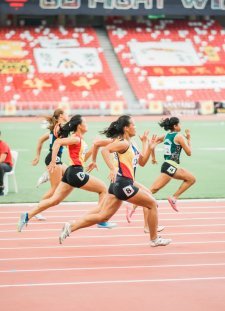
Unconscious Maladaptations. Even though an athlete has not shown clear signs of the maladaptions in their neuro pathways through poor performance or a performance block, everyone has them and de-conditioning them creates more neuro pathways available for performance. (Grand, D., Phd., & Goldberg, A., Ed.D, This is Your Brain on Sports). It also releases any muscle guarding or torsion o the dura mater that may be happening without realizing it. (Roberts, P., LCSW)
Any athlete striving to be their best can benefit from this. The more neuro pathways available, the better for anyone striving to excel. (Roberts, P., LCSW). It will allow an athlete to reach more of their potential.
Clearing Worst Case Scenarios/“What Ifs.” With upcoming events, such as games, meets or competitions, an athlete may have thoughts about the worst that could happen: “What if I freeze? What if my legs are too tired? or “what if I can’t make my free throws?” Sometimes the athlete is well aware of this happening internally. Other times, the athlete is not aware of the thoughts so much as they might be aware of feeling tense or restless or dread. In either event, clearing out the cortisol/stress reaction these thoughts can cause, and possibly any re-triggering of unconscious negative events they can cause, can be very helpful in keeping the athlete relaxed and loose before and during a competition. (Roberts, P., LCSW). This might make the difference between playing and being benched.
➔ These three NPT/BSP processes allow the athlete to be relaxed, calm and focused before and during the performance, which is crucial to success in any sport. In addition, the athlete can connect with the “In the Zone” feeling, improving fluidity and confidence.
Brainspotting
Information
Lindsey Vonn’s
Experience with Brainspotting
- Lindsey Vonn, from her book “Rise: My Story”

“A lot of times in traditional talk therapy, you skim the surface, by venting and sharing stories and patterns. That can feel good, and often it does help, but in my experience, it never solved the problem…If talk therapy is like the leaves of a tree, brainspotting is like its roots.
“The idea [behind Brainspotting] is that every time you experience emotional trauma, your body retains it, almost like a tally in your brain that won’t fade away until you fully work through it, by opening up your neurological pathways and clearing it away.
“It can be very, very hard, and emotionally intense. Some days, I would feel so mentally drained, I would need to immediately sleep it off, but it really does work.”
Lindsey Vonn discusses brainspotting from her memoir, Rise: My Story.
Brainspotting
Articles
Articles by Susannah Muller
How brainspotting works and how it can help swimmers perform better
Baseball & Fast Pitch Softball: Brainspotting - Key to Softball Performance
How brainspotting works and how it can help baseball & softball players perform better
Baseball & Fast Pitch Softball: Using Neuroscience to Get Over the Yips in Softball and Baseball
Press
Releases
NY Breakers Hire Sports Psychology Consultant Susannah Muller


Muller, a past US National Team Member, has worked with multiple Olympic, professional and NCAA Division I athletes. She specializes in utilizing cutting-edge neuroscience to help athletes overcome slumps, performance anxiety or other mental blocks. Her work also includes Expansion of Peak Performance and recovery of performance level after injuries. Muller’s goal for all her clients is for improvement in performance, self-confidence and enjoyment of their sport.
Muller was a 14 time All-American swimmer at Stanford University, where she was a Co-Team Captain and a member of the 1989 NCAA Division I championship team. In her senior year, she won the Pac-10 Conference title in the 200 backstroke. Muller competed at both the 1984 and 1988 Olympic Trials, was a finalist at the US Swimming 1986 World Game Trials and was a finalist at the World University Games in 1989.
Muller graduated from Stanford University with a BA in psychology and English. She graduated second in her class from UCLA School of Law and practiced law for 8 years. She then earned her M.A. at Alliant International University in Marriage and Family Therapy.
Official release on Instagram
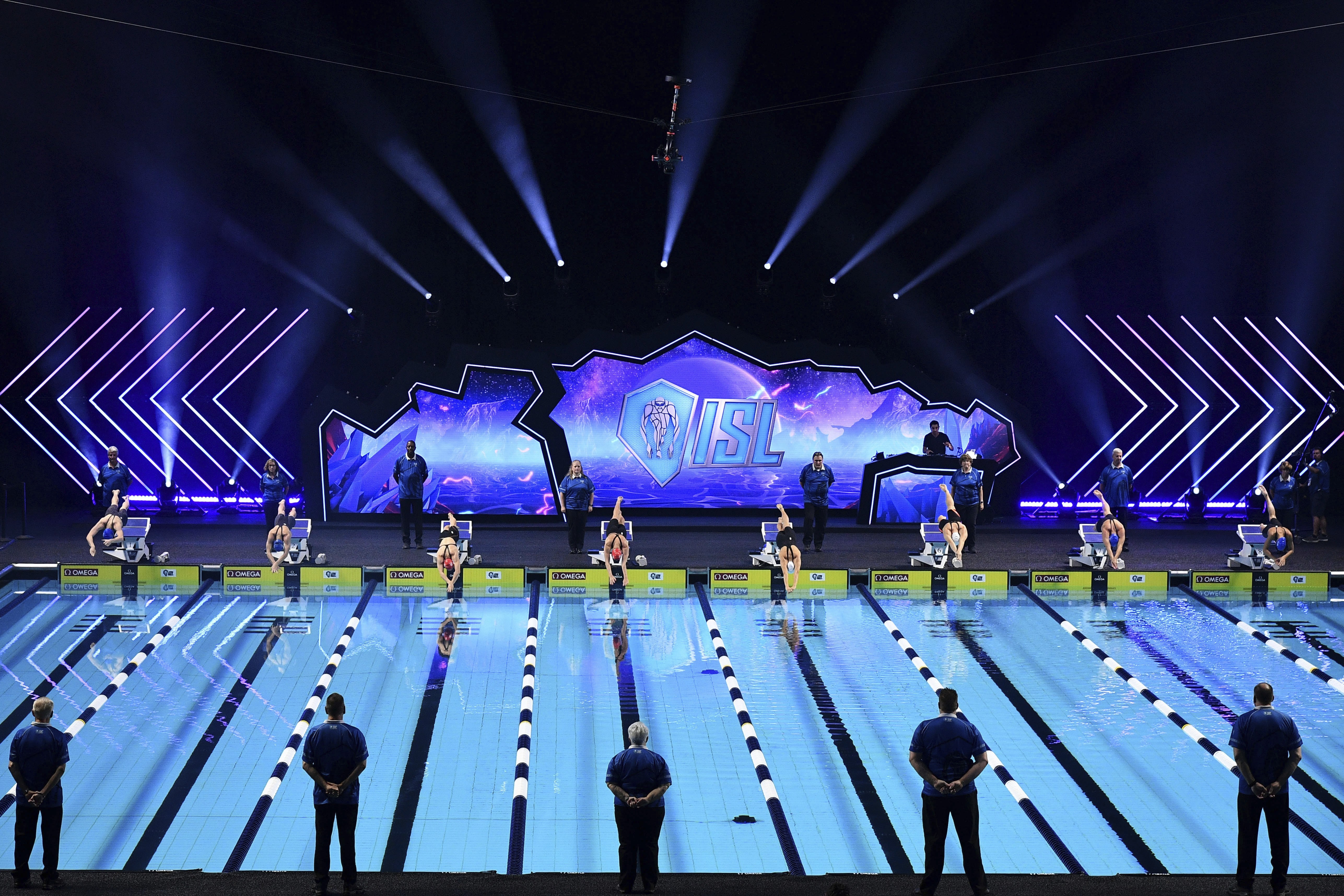
International Swimming League competition at Indiana University natatorium
on October 5 in Indianapolis. (Alfredo Falcone/LaPresse via AP Images)
About
Susannah
Competitive Swimming Career

I was a member of the US National Team multiple years and was World-Ranked multiple years (100 & 200 meter backstroke and 200 meter Individual Medley). I competed at both the 1984 and 1988 Olympic Trials, as well as the US Swimming 1986 World Game Trials and was a finalist at the World University Games in 1989. I was a 14 time All-American swimmer for Stanford University and was Co-Captain of the Varsity team my Senior year. My Junior year we won the NCAA Division I championship and in my Senior year I was Pac-10 Conference Champion in the 200 yd. backstroke.
I understand the demands, pressure and expectations of a high-level competitive athlete. I love working with athletes of all levels and helping them overcome blocks or push their performance to the next level.
Contact
Susannah
CONTACT INFORMATION
Susannah Muller
M.A., Marriage and Family Therapy
J.D., UCLA School of Law
BA, Stanford University, Psychology and English
Brianspotting 2 Heal
Phone: 619.787.2743
Email: susannah@levelupsportspsychology.com
Instagram: @mullersportspsych
Address:
5230 Carroll Canyon Rd., Suite 316
San Diego, CA 92121
Please fill out the form below:

